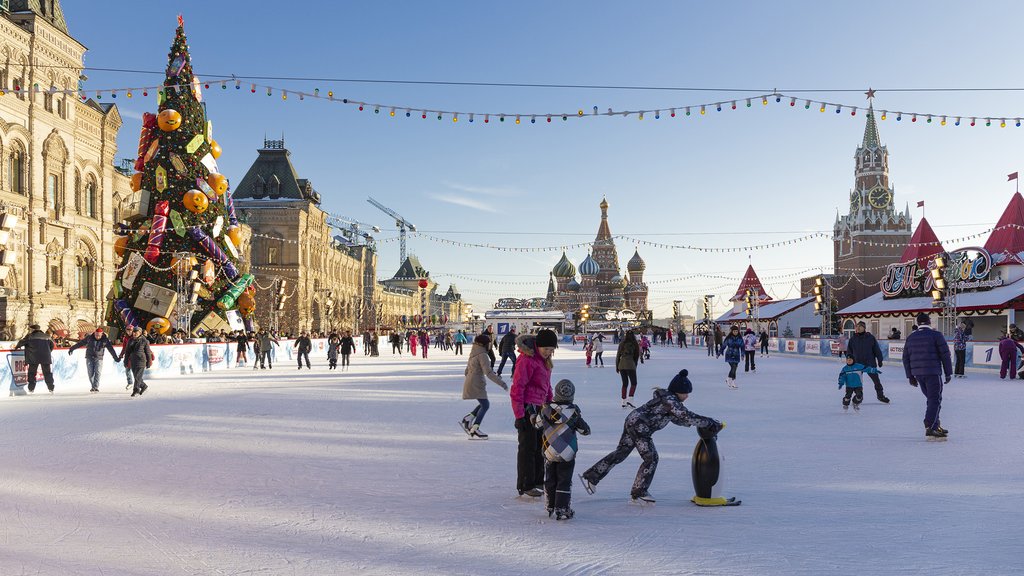
November is the start of winter in Russia. This means cold temperatures in some parts, and very cold temperatures in others. But, Russia is actually very appealing in the winter as the cities in particular look lovely under snow. You just need to know where to go and be prepared for snow. Here’s what you need to know about traveling to Russia in November.
The November Climate in Russia: What to Expect
November signals the true arrival of winter in Russia, ushering in a season of captivating beauty and unique travel considerations. While temperatures are consistently cold throughout the country, November offers a slightly milder experience compared to the depths of December and January, the coldest months of the year. In major cities like Moscow and St. Petersburg, expect average temperatures hovering around 39° F (1° C). This temperature range is quite typical for the cities and surrounding regions of the famous Golden Ring in western Russia, a collection of ancient towns and cities brimming with historical and architectural significance.
Venturing eastward into Russia, particularly towards Siberia, you’ll encounter even colder conditions. These eastern regions typically experience temperatures several degrees lower than those in the west. Snowfall is common throughout Russia in November, and it’s likely that the snow will accumulate and remain on the ground, creating a picturesque winter landscape. Be prepared for the possibility of snowy conditions, regardless of which region you plan to visit.
Another important factor to consider when planning a trip to Russia during the winter months is the limited daylight hours. Although the shortest day of the year occurs in late December, the days grow progressively shorter throughout November. This effect is more pronounced the further north you travel. In Moscow, for example, the sun typically rises after 9 am and sets around 5 pm. However, it’s important to distinguish between daylight and direct sunlight. Russian winters, especially when it’s not actively snowing, can be surprisingly bright during daylight hours. Still, it’s wise to anticipate days with minimal sunlight. Be prepared for a spectrum of lighting conditions.
Navigating Crowds and Costs in November
Winter is generally considered the off-season for tourism in Russia, with the exception of the brief period around New Year’s Eve and Orthodox Christmas, which falls in early January. Therefore, if you travel to Russia in November, you can expect to encounter fewer crowds at popular tourist destinations. The reduced demand may also translate into attractive deals on hotel accommodations, particularly in major cities such as Moscow and St. Petersburg. Taking advantage of these potential cost savings could make your trip even more enjoyable.
It’s essential to be aware that many tourist attractions operate on a reduced winter schedule in November. This typically means that they open later in the morning and close earlier in the afternoon compared to their operating hours during the peak season. Always check the specific opening hours of the attractions you plan to visit to avoid disappointment. Planning your itinerary accordingly will help you make the most of your time.
Recommended Destinations for November Travel
For winter travel to Russia, we suggest focusing your itinerary on Moscow and St. Petersburg. These vibrant cities offer a wealth of indoor activities and attractions that are perfect for escaping the cold. Despite the winter weather, you won’t feel limited in your options. Both cities boast numerous world-class museums, art galleries, theaters, and historical sites to explore. Furthermore, navigating these cities is made easy by their efficient and extensive metro systems.
Traveling extensively throughout the country during winter can be challenging due to potential delays caused by snowstorms and other weather-related disruptions. Smaller towns may also have fewer indoor attractions to keep you entertained for extended periods. Sticking to the major urban centers is a safe and enjoyable option.
Must-See Attractions and Activities
Moscow and St. Petersburg are home to some of the most impressive art and cultural institutions in Europe. Be sure to visit renowned museums such as the Hermitage in St. Petersburg, which houses a vast collection of art and artifacts from around the world. In Moscow, explore the historic Kremlin, the iconic Tretyakov Gallery with its extensive collection of Russian art, and the Pushkin Museum of Fine Arts, showcasing masterpieces from various periods and styles.
For a memorable cultural experience, attend a performance at one of Russia’s famous theaters, such as the Bolshoi in Moscow or the Mariinsky in St. Petersburg. These theaters are renowned for their exceptional opera, ballet, and theater productions. Enjoy a spectacle of Russian cultural performing arts.
While exploring Moscow and St. Petersburg, take time to appreciate the architectural splendor and artistic grandeur of the Soviet-era metro systems. These underground transportation networks are not only functional but also showcase stunning public art, including elaborate mosaics, sculptures, and murals.
Ice skating is a beloved winter pastime in Russia. Traditionally, people would skate on frozen rivers and lakes. Today, many cities also offer special seasonal ice rinks, providing a convenient and fun way to enjoy the winter weather. Ice skating is a great way to warm up, get some exercise, and immerse yourself in local culture.
November Events and Celebrations
Be aware that the Day of Reconciliation and Accord (Revolution Day) is celebrated on November 7th. This day marks the anniversary of the 1917 revolution, a pivotal event in Russian history.
A Trip to Tula
You might also be interested in visiting the historical and architectual highlights of Tula.
B-2211
